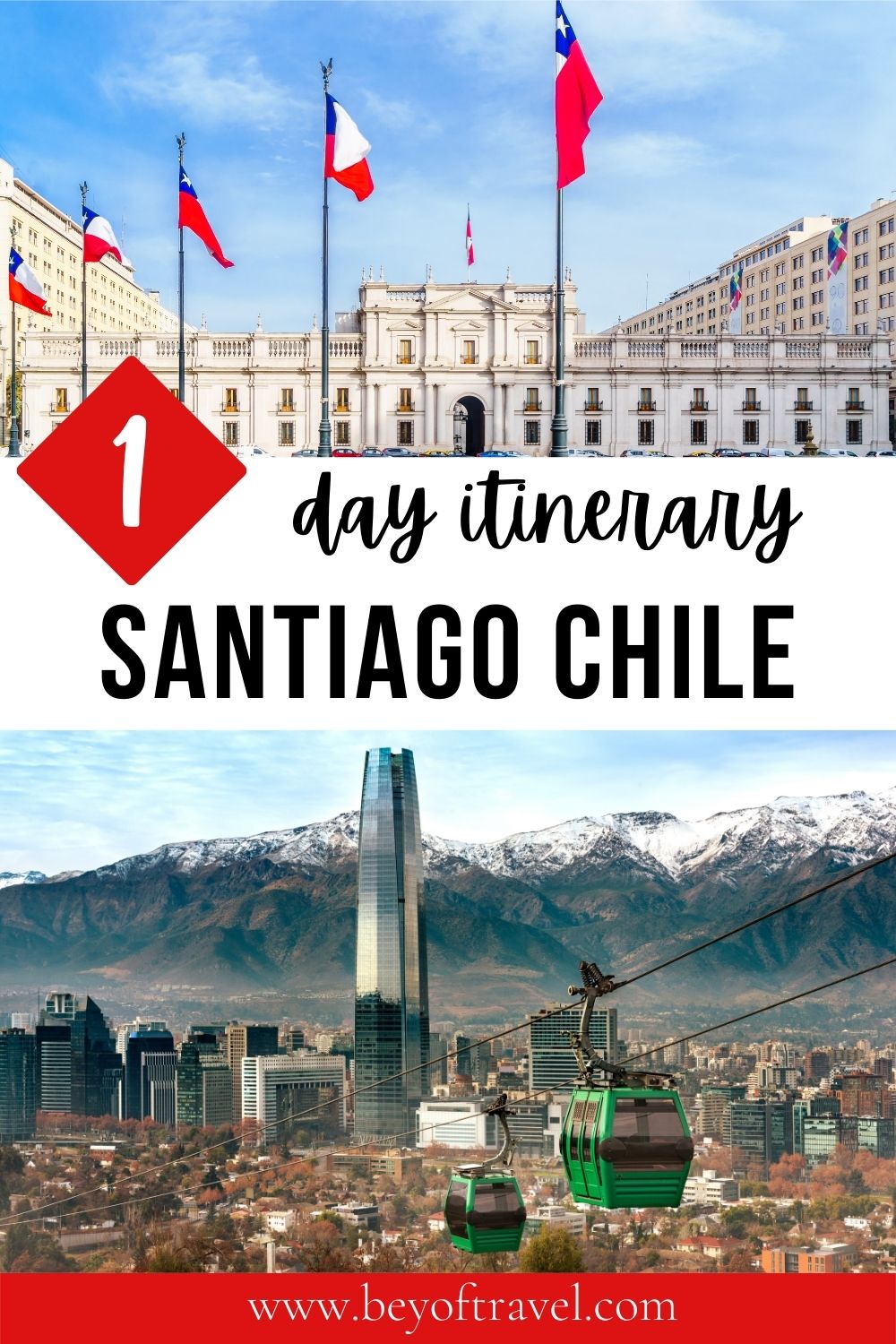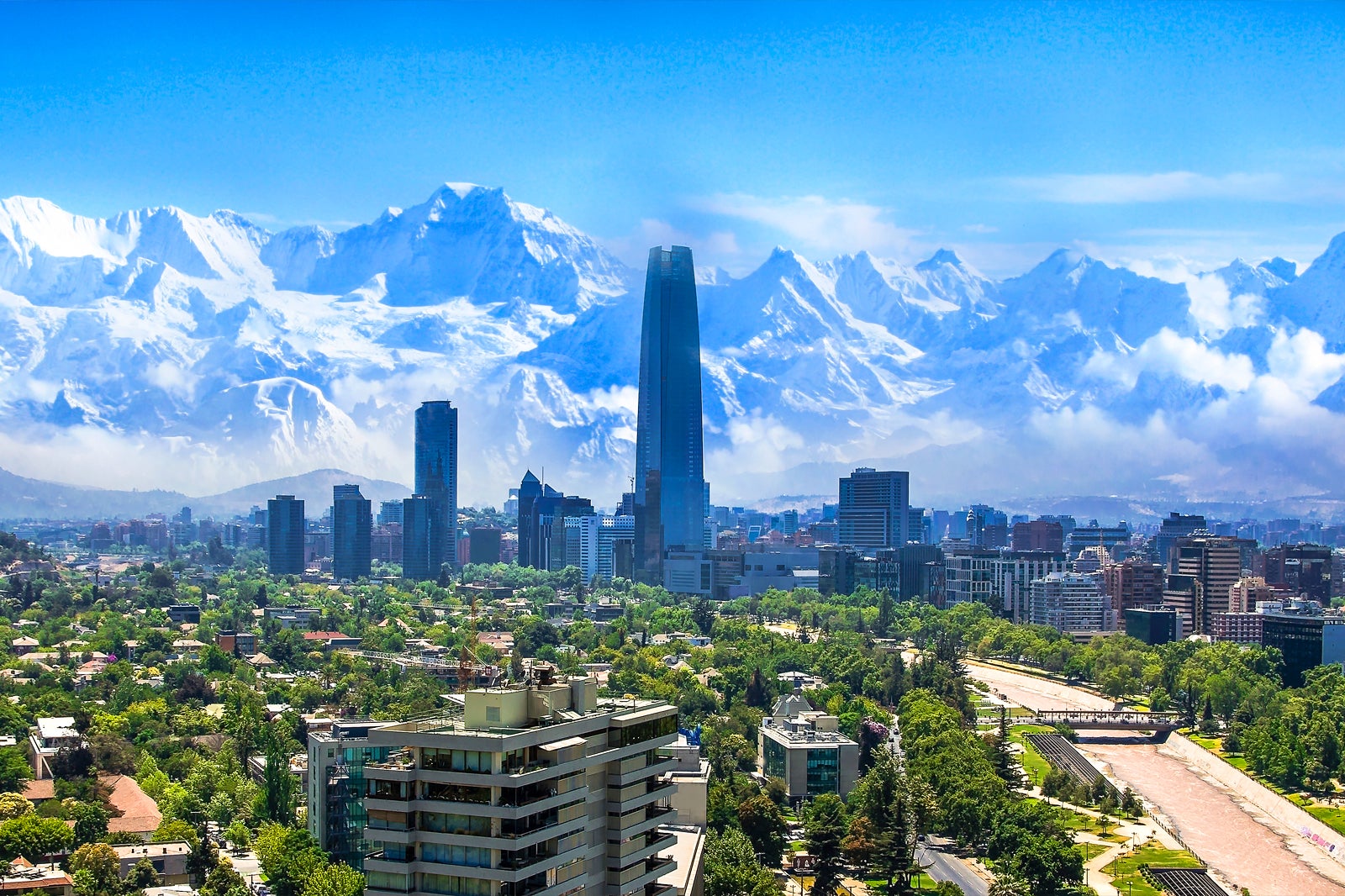
Santiago, the vibrant capital of Chile, pulsates with an infectious energy, a captivating blend of historical grandeur and contemporary dynamism. Nestled in a valley at the foot of the majestic Andes Mountains, this sprawling metropolis offers a rich tapestry of experiences for every traveler, from art enthusiasts and history buffs to nature lovers and culinary adventurers. Embarking on a journey to Santiago is an invitation to explore a city that gracefully balances its colonial past with a forward-looking spirit, all while being cradled by breathtaking natural beauty.
This comprehensive guide will equip you with everything you need to know to plan your unforgettable adventure to Santiago. We’ll delve into its compelling history, highlight its most iconic attractions, provide practical travel tips, explore diverse accommodation options, navigate its transportation network, and pinpoint the ideal times to experience its charm.
A Glimpse into Santiago’s Storied Past

Related Articles about Santiago: A Journey Through the Heart of Chile:
- Unveiling the Wonders of Egypt: A Guide to the Land of Pharaohs
- Qatar: Where Tradition Meets Tomorrow – A Comprehensive Travel Guide
- Austria: A Symphony of Scenery, History, and Culture
- Journey to the Land of the Rising Sun: Your Comprehensive Guide to Traveling in Japan
- Dubai: Your Gateway to Opulence, Adventure, and Arabian Nights
Santiago’s story begins in 1541 when Spanish conquistador Pedro de Valdivia founded the city on the Mapocho River. Initially a strategic outpost, it quickly grew in importance as the center of colonial administration for the Captaincy General of Chile. The city’s early development was marked by earthquakes and indigenous uprisings, shaping its resilient character.
During the Spanish colonial era, Santiago developed a distinct architectural style, evident in its plazas, churches, and government buildings. The Plaza de Armas, the city’s central square, has been the heart of Santiago for centuries, witnessing pivotal moments in Chilean history. The struggle for independence from Spain in the early 19th century saw Santiago emerge as a crucial battleground and a symbol of Chilean nationhood.
The 20th century brought further transformations. Santiago experienced rapid industrialization and population growth, leading to urban expansion and modernization. The city also faced periods of political upheaval, most notably the 1973 military coup and the subsequent Pinochet dictatorship, leaving an indelible mark on its social and political landscape. Today, Santiago is a thriving, modern capital, yet its historical roots remain deeply embedded, offering a tangible connection to its past.
Unveiling Santiago’s Top Attractions
Santiago’s allure lies in its diverse array of attractions, catering to a wide spectrum of interests:
-
Plaza de Armas: The historical and geographical heart of Santiago. This bustling square is surrounded by significant landmarks, including the Metropolitan Cathedral, a stunning example of neoclassical architecture; the Central Post Office, a grand colonial building; and the National Historical Museum, housed in the former Royal Palace, which chronicles Chile’s journey from pre-Columbian times to the present. Take a moment to soak in the atmosphere, observe the street performers, and admire the intricate details of the surrounding architecture.
-
Cerro San Cristóbal: This iconic hill offers panoramic views of the city and the Andes. Accessible by funicular, cable car, or a scenic hike, it’s a beloved spot for locals and tourists alike. At its summit, you’ll find a statue of the Virgin Mary, a religious sanctuary, and the Parque Metropolitano, a vast urban park offering green spaces, swimming pools, a zoo, and botanical gardens. It’s the perfect place for a leisurely stroll, a picnic, or simply to marvel at the breathtaking cityscape.
-
Barrio Lastarria: A bohemian and cultural hub, Barrio Lastarria is characterized by its charming cobblestone streets, independent boutiques, art galleries, theaters, and cozy cafes. It’s a vibrant neighborhood where history and creativity intertwine. Don’t miss the Centro Cultural Gabriela Mistral (GAM), a contemporary cultural center hosting exhibitions, performances, and workshops.
-
Barrio Bellavista: Known for its lively nightlife, colorful houses, and artistic vibe, Bellavista is a must-visit for those seeking a taste of Santiago’s bohemian spirit. This neighborhood is home to La Chascona, one of Pablo Neruda’s three houses, now a museum dedicated to the Nobel Prize-winning poet. Explore the street art, enjoy a meal at one of the many restaurants, or catch a live music performance.
-
Museo Chileno de Arte Precolombino (Chilean Museum of Pre-Columbian Art): This exceptional museum houses an impressive collection of artifacts from various indigenous cultures of the Americas, showcasing the rich artistic and cultural heritage of the region before the arrival of Europeans. It’s a deeply insightful and visually stunning experience.
-
Mercado Central (Central Market): A culinary paradise, the Mercado Central is a bustling indoor market where you can savor fresh seafood, traditional Chilean dishes, and local produce. It’s a sensory overload of sights, smells, and tastes. Enjoy a delicious seafood lunch at one of the many restaurants within the market.
-
Palacio de La Moneda: The seat of the Chilean government, this neoclassical palace is a significant historical landmark. You can witness the changing of the guard ceremony, a precise and colorful display of military tradition. Tours of the palace are available, offering a glimpse into the country’s political history.
-
Museo de la Memoria y los Derechos Humanos (Museum of Memory and Human Rights): This poignant museum documents the human rights violations that occurred during the Pinochet dictatorship. It’s a powerful and essential visit for understanding Chile’s recent history and the importance of remembering.
-
Sky Costanera: Located in the Costanera Center, South America’s tallest building, the Sky Costanera observation deck offers unparalleled 360-degree views of Santiago and its surrounding landscape. On a clear day, the Andes Mountains form a dramatic backdrop.

Essential Travel Tips for Santiago
To make your Santiago adventure smooth and enjoyable, keep these tips in mind:
- Language: Spanish is the official language. While many people in tourist areas speak some English, learning a few basic Spanish phrases will greatly enhance your interactions.
- Currency: The Chilean Peso (CLP) is the official currency. Credit cards are widely accepted in hotels, restaurants, and larger stores, but it’s advisable to carry some cash for smaller purchases and markets.
- Safety: Santiago is generally a safe city, but like any large metropolis, it’s important to be aware of your surroundings. Take precautions against petty theft, especially in crowded areas and on public transport. Avoid displaying expensive jewelry or electronics openly.
- Tipping: Tipping is customary in restaurants and for services. A 10% service charge is often included in restaurant bills, but it’s common to leave an additional tip if you’re satisfied with the service.
- Water: Bottled water is recommended, especially for those with sensitive stomachs.
- Sun Protection: The sun can be intense, especially at higher altitudes. Pack sunscreen, a hat, and sunglasses.
- Altitude: Santiago is situated at an altitude of over 500 meters. While most people adjust well, some may experience mild altitude sickness. Stay hydrated and avoid strenuous activities on your first day.
- Electricity: Chile uses Type L and Type C electrical outlets, with a voltage of 220V. Bring an adapter if necessary.
- Connectivity: Wi-Fi is readily available in hotels, cafes, and public spaces. Consider purchasing a local SIM card for easier access to data.
Accommodation Options in Santiago
Santiago offers a diverse range of accommodation to suit every budget and preference:
-
Luxury Hotels: For an indulgent experience, consider hotels like the Ritz-Carlton Santiago, JW Marriott Hotel Santiago, or The Singular Santiago. These offer impeccable service, world-class amenities, and prime locations.
-
Mid-Range Hotels: You’ll find a plethora of comfortable and well-equipped mid-range hotels in neighborhoods like Providencia, Las Condes, and Bellavista. Options like Hotel Cumbres Lastarria, Hotel Diego de Almagro, and Hotel Kennedy provide excellent value.
-
Boutique Hotels: For a more personalized and stylish stay, explore Santiago’s charming boutique hotels. These often boast unique decor and a more intimate atmosphere. Look for options in Barrio Lastarria or Barrio Bellavista.
-
Hostels: Budget travelers will find a vibrant hostel scene in Santiago, particularly in areas like Barrio Bellavista. These offer dormitory beds and private rooms, along with communal spaces for socializing and meeting fellow travelers.
-
Apartments and Vacation Rentals: For longer stays or those seeking more space and independence, consider renting an apartment through platforms like Airbnb. This is also a great option for families or groups.
Navigating Santiago: Transportation Options
Getting around Santiago is relatively straightforward thanks to its efficient public transportation system and various other options:
-
Metro de Santiago: The Santiago Metro is one of the most modern and extensive subway systems in Latin America. It’s clean, efficient, and connects most major attractions and neighborhoods. Purchase a rechargeable card (BIP!) for easy travel.
-
Buses: Santiago has an extensive bus network, offering a more affordable way to get around. However, they can be more crowded and slower than the metro. Use apps like Moovit or Google Maps to plan your bus routes.
-
Taxis and Ride-Sharing: Taxis are readily available throughout the city. Ensure the meter is used or agree on a fare before starting your journey. Ride-sharing apps like Uber and Cabify are also popular and offer a convenient option.
-
Walking: Many of Santiago’s central neighborhoods, such as Barrio Lastarria, Barrio Bellavista, and the downtown area, are best explored on foot. This allows you to discover hidden gems and soak in the local atmosphere.
-
Bicycle Rentals: For the adventurous and environmentally conscious, bicycle rentals are becoming increasingly popular, especially in areas with dedicated bike lanes.
The Best Time to Visit Santiago
Santiago experiences a Mediterranean climate with four distinct seasons, each offering a unique charm:
-
Spring (September to November): This is arguably the best time to visit Santiago. The weather is pleasant and mild, with temperatures ranging from 15°C to 25°C (59°F to 77°F). The city comes alive with blooming flowers, making parks and gardens particularly beautiful. It’s ideal for exploring the city on foot and enjoying outdoor activities.
-
Summer (December to February): Summers are hot and dry, with temperatures often exceeding 30°C (86°F). While perfect for enjoying the city’s swimming pools and nearby beaches, daytime sightseeing can be strenuous. This is also peak tourist season, so expect larger crowds and higher prices.
-
Autumn (March to May): Autumn brings cooler temperatures and beautiful fall foliage, especially in the surrounding hills. Temperatures range from 10°C to 20°C (50°F to 68°F). This is another excellent time to visit for comfortable exploration and fewer crowds than summer.
-
Winter (June to August): Winters are cool and damp, with average temperatures between 5°C and 15°C (41°F to 59°F). Rainfall is common, and the Andes can be covered in snow, offering opportunities for skiing and snowboarding at nearby resorts. While sightseeing might be less appealing for some, the city has a cozy charm, and you’ll encounter fewer tourists.
Embark on Your Santiago Adventure
Santiago is a city that rewards exploration with its rich history, vibrant culture, and breathtaking natural surroundings. Whether you’re drawn to its historical landmarks, its burgeoning culinary scene, or the majestic Andes that frame its horizon, this dynamic capital promises an unforgettable journey. By understanding its past, embracing its present, and preparing with the practical tips outlined above, you’ll be well on your way to experiencing the magic of Santiago, Chile.





